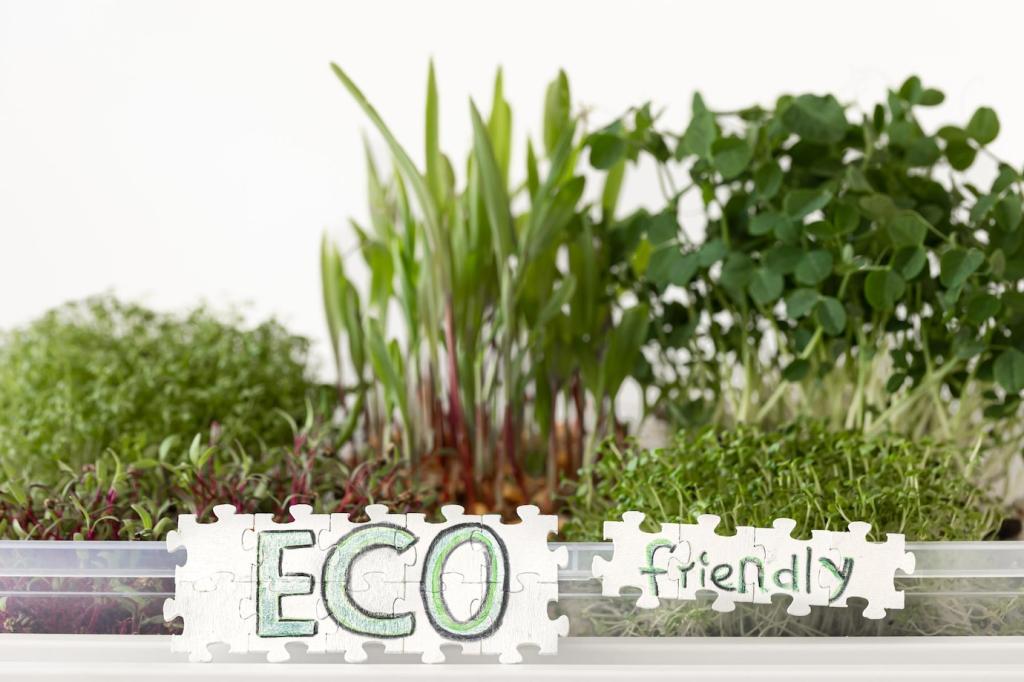Building Better: Green Alternatives for Concrete and Cement
Chosen theme: Green Alternatives for Concrete and Cement. Explore practical innovations, real projects, and smart design choices that lower carbon without sacrificing performance. Join our community, share your experiences, and subscribe for fresh stories and field‑tested ideas.
Why Rethink Cement and Concrete?
Cement production contributes roughly 7–8% of global CO2, driven by limestone calcination and energy‑intensive kilns. With urbanization rising, demand pressures climate goals. Greener alternatives target the clinker content, energy sources, and curing methods to cut emissions significantly.

Supplementary Cementitious Materials (SCMs)
LC3 blends limestone and calcined clay to reduce clinker by up to 40%, cutting CO2 without sacrificing strength. It performs well in warm climates, offers good durability, and leverages widely available clays. Curious about sourcing or specs? Drop your questions below.
Supplementary Cementitious Materials (SCMs)
Ground granulated blast furnace slag and fly ash can enhance workability, reduce heat of hydration, and boost long‑term strength. While supply can be variable regionally, thoughtful quality control and blended strategies keep performance reliable while shrinking the project’s carbon footprint.
Supplementary Cementitious Materials (SCMs)
Volcanic pozzolans and rice husk ash offer low‑carbon reactivity. When processed correctly, they densify microstructure and enhance durability. One rural bridge program used local pozzolan to cut emissions and costs, proving that smart sourcing can marry sustainability, resilience, and affordability.

Hempcrete for Breathable Envelopes
Hemp shiv mixed with lime creates a lightweight, vapor‑open infill that locks away biogenic carbon while regulating humidity. It is non‑structural, fire‑resistant, and comfortable. Builders love its calm indoor feel. Considering hempcrete walls or retrofits? Share your climate zone and goals.

Biochar‑Enhanced Concrete
Fine biochar can partially replace sand or act as an additive, storing carbon and improving internal curing in some mixes. Early research shows potential for reduced shrinkage and better durability. Local availability matters, so pilot tests are key before scaling project‑wide.
Alkali‑Activated Materials and Geopolymers
What Are Geopolymers?
Geopolymers form from aluminosilicate precursors such as slag or fly ash activated by alkaline solutions, creating robust Si‑O‑Al networks. They can deliver rapid early strength, chemical resistance, and meaningful carbon reductions. Mix design and curing control are essential for consistent results.
Safety, Standards, and Supply
Handling alkaline activators demands training and proper PPE. Look for emerging standards, environmental product declarations, and third‑party certifications. Stable supply chains and pre‑packaged systems reduce risk. Ask suppliers for references and pilot pours to build trust with your project stakeholders.
A Contractor’s First Geopolymer Pour
A midwestern crew replaced a sidewalk using a geopolymer mix during a cool spring. Early strength impressed the inspector, and finishing felt familiar. The crew left curious, not skeptical. If you’ve tried similar, comment with curing tips that worked in your climate.
Designing with Less: Mix Optimization and Circularity
Right‑sizing water‑to‑binder ratios, leveraging admixtures, and specifying performance rather than prescriptive cement contents unlock lower‑clinker blends. Continuous quality control preserves finishability and strength. Engineers report cost neutrality when optimization pairs with dependable supply and clear acceptance criteria in specifications.
Practical Pathways for Builders and Cities
Shift to performance‑based specifications, allow higher SCM ranges, and require environmental product declarations. Include durability criteria relevant to exposure class. Pre‑approve multiple suppliers to protect schedules. Clear submittal language turns sustainability from a risk into a reliable part of project delivery.
Municipalities can set embodied carbon caps, offer alternates for low‑clinker mixes, and pilot carbon‑cured precast. Tools like EC3 help compare EPDs. When public projects ask for greener concrete, suppliers invest, prices stabilize, and private projects benefit next. Ask your council to act.
A neighborhood library chose LC3‑based blocks and a hempcrete reading nook. Volunteers tracked indoor comfort and acoustic delight. Visitors noticed the calm, not the chemistry. What space in your community deserves greener materials? Comment, subscribe, and help us spotlight your story next.
